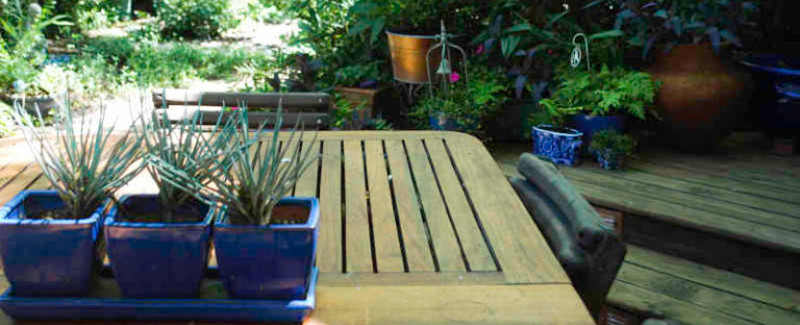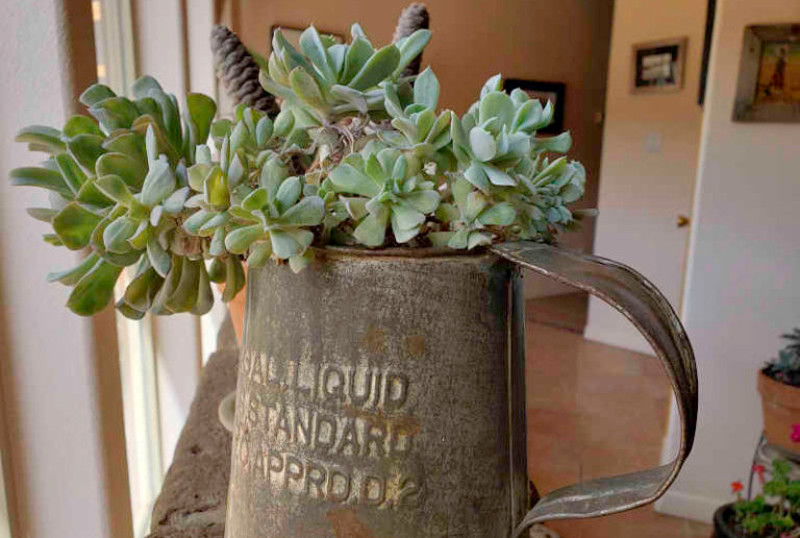Most gardeners choose a container based on how much they like it or its color. Those are good reasons; after all, you want to enjoy your purchase when it’s in your home or on your patio. And the color might be important to curb appeal or your entryway statement. But it helps to keep in mind a few other tips for container choices.

Container Size
Some plants need a container large enough to support a plant’s growth. For example, even patio tomatoes need a pot about 12 inches in diameter. The diameter is not always listed. A 10-inch container equates to about 3 gallons, and a 14-inch container to nearly 7 gallons, but it depends on the depth. As a general rule, go for about 5 gallons for container-grown tomatoes.
In 2004, standards were released to help ensure more consistent labeling from nurseries. For example, a 1-gallon potted plant is about 152 to 251 cubic inches, taking into account diameter and depth. Be sure to consider the mature size of plants when arranging containers. For single plants, purchase a container at least a size larger than the one a plant comes in. There are exceptions, however.

Many cacti and succulents need smaller pots to confine root growth; it’s fun to be creative with color and shape.
Some plants prefer crowded roots. Many succulents will fail to grow and flower if placed in a container that is too large. When in too large a pot, all the plant’s energy goes to the easiest activity – growing more roots. This means less energy can go into producing growth above the soil line. So, try not to go more than 10% larger than the size of the succulent. And keep in mind some succulents have tap roots and need enough depth for those roots to grow and seek water.
The same goes for a totally unrelated plant: the African violet. Violets do best with crowded roots and need good drainage, just like succulents. Place an African violet in a container smaller than the diameter of the leaves (those who grow the plants for shows generally choose containers one-third the diameter of the foliage). And repot plants like African violets every so often, gradually increasing container size as needed. Don’t take a violet (or succulent) in a 3-inch pot up to 10 inches in one repotting.
Container Shape
Look at the container depth as well as its diameter. Shallow terracotta containers only work with annuals and shallow-rooted plants. Many rosette-shaped succulents like hens and chicks also can take shallower shapes. But your tomato needs good depth to form large, healthy roots. Cherry tomato roots can be at least 15 inches long. And if your cactus has a tap root, make sure the pot’s height can allow for growth.
Container shape also affects plant placement and the overall appeal of the container. A tall container looks best with at least one tall plant element and maybe a trailing one.

Glazed pots can look colorful and elegant. and mix nicely with terracotta.
Container Material
Clay or terracotta pots are excellent for indoor or outdoor succulents. They dry out quickly because the sides are porous. These pots usually are your best bet for drought-tolerant plants, but not for vegetables or many ornamental flowers. And African violets in clay pots often dry out too quickly. Plastic and fabric pots are less expensive and lighter. The material’s weight is a consideration for any plant you know you might have to move to change sun or shade exposure, or bring indoors in winter.

It’s fun to create containers, but even succulent containers need some drainage.
Container Drainage
All containers need good drainage, even those you use for succulents. Few plants do well sitting in wet soil for long. If you repurpose a container, be sure to drill some holes in the bottom. And try not to let the container (especially a shallow one) sit in a full saucer if you use one to catch drainage. If your container appears to drain too quickly, change how you water – a little at a time repeated once or twice. Always add water to a container at a slow rate instead of a heavy pour. Drenching the container makes soil nutrients run right out with the water.
Container Color
It’s tempting to match an entry or house color, or to have a container blend in on your patio. Sometimes, though, you can make a really bold statement by choosing a container that is bright, colorful or a nice contrast to plants inside and around it.
Finally, if you find a container that will look perfect in a spot because of its color, shape or pattern, but maybe the wrong material or size for your plant, try slipping another pot inside it.
 |
Author Teresa Odle - Published 12-10-2020 |
